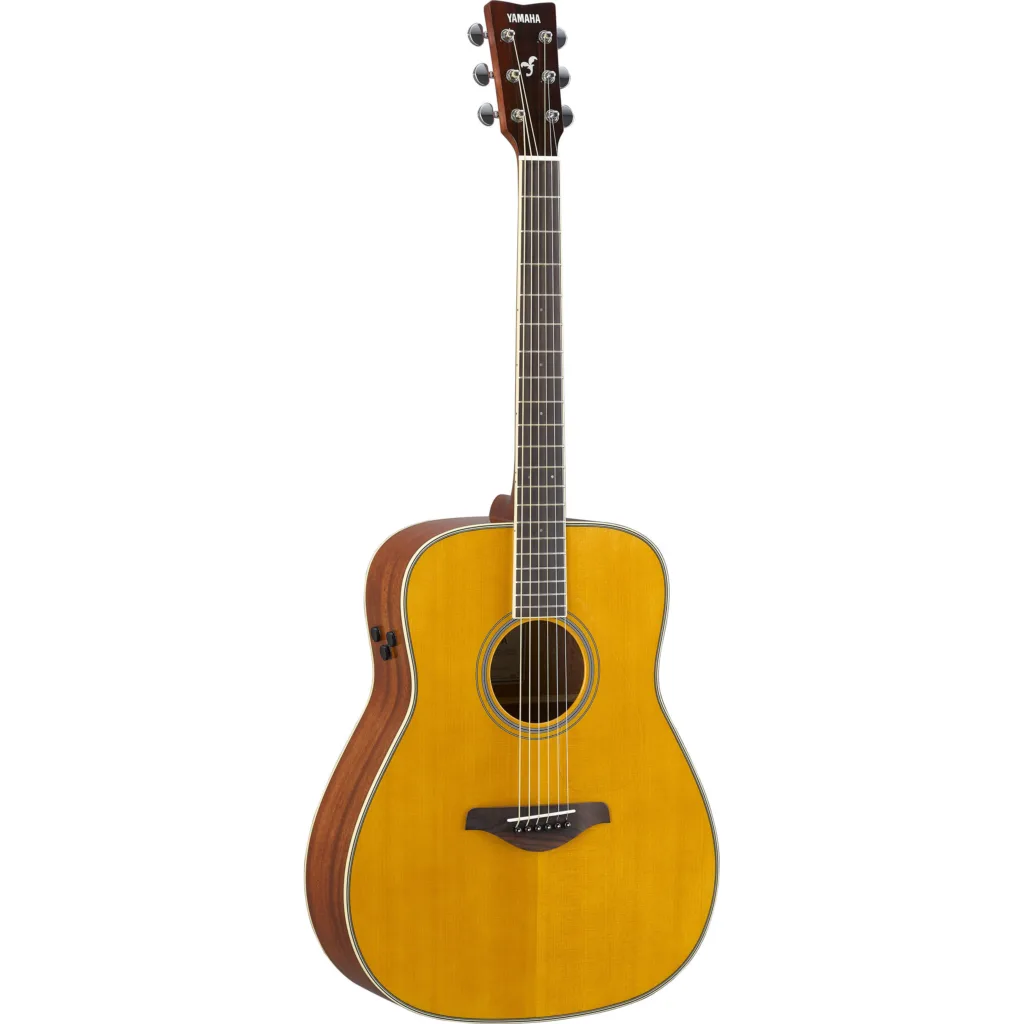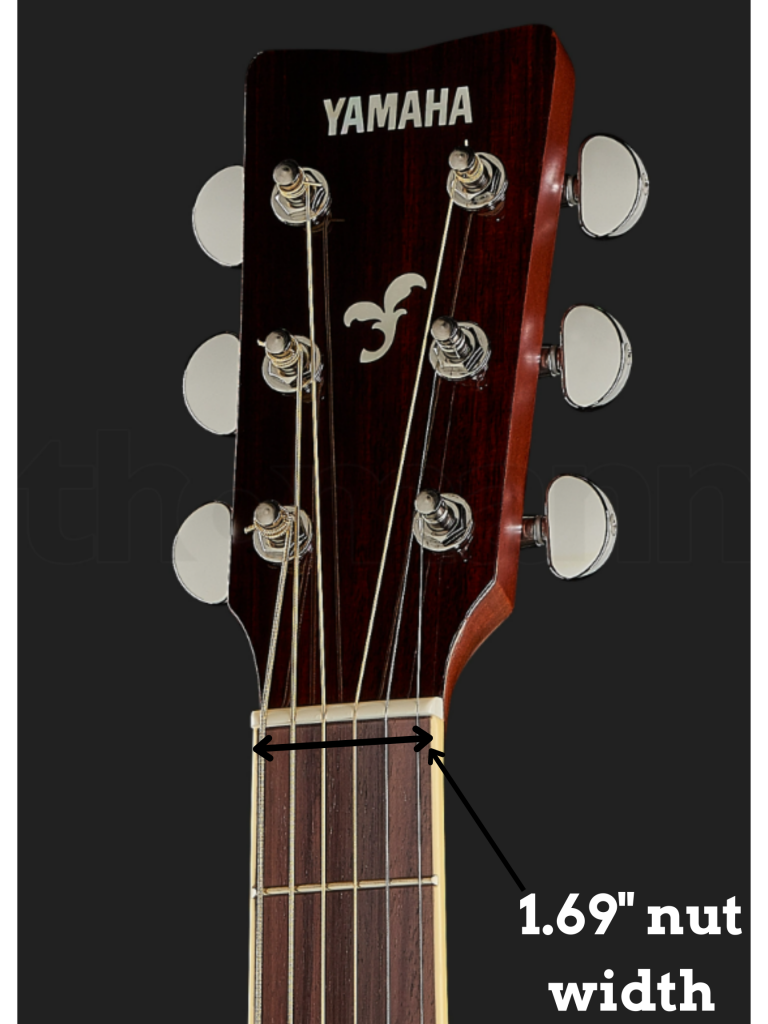Have you ever wondered what nut width on a guitar means? Maybe you’ve heard it mentioned when discussing different guitar models or seen it listed as a spec on a product description, but never really understood its significance. Well, you’re not alone! As a musician and avid guitar player, I too was once confused about nut width and why it matters. But after years of playing and researching, I can confidently say that understanding nut width is crucial for any guitarist looking to find their perfect instrument.
In this article, we’ll delve into the world of nut width and unravel its importance in the world of guitars. From what exactly it refers to, how it affects your playing experience, to why different widths are preferred by different players – we’ll cover all the key aspects you need to know. So whether you’re a beginner just starting out on your musical journey or an experienced player looking to upgrade your gear, this article is for YOU! Let’s dive in and discover everything there is to know about nut width on a guitar.
So, what is nut width on a guitar?
Nut width on a guitar refers to the distance between the two outer strings at the nut, which is located at the top of the fretboard. This measurement can vary from guitar to guitar, but typically falls between 1 5/8 inches and 1 3/4 inches.
So why does it matter? Well, nut width plays a crucial role in determining how comfortable and easy it is to play a guitar. A wider nut allows for more space between strings, making it easier for players with larger hands or fingers to navigate chords and complex fingerings. On the other hand, a narrower nut may be preferred by those with smaller hands as it requires less stretching and reaching.
Additionally, nut width can affect tone and sound quality. A wider nut creates more room for vibrations to travel through each string individually, resulting in clearer notes and better sustain. However, some musicians argue that a narrower nut produces a warmer tone due to tighter string spacing.
Ultimately, choosing the right nut width comes down to personal preference and playing style. It’s important for any guitarist – beginner or experienced –to try out different widths before purchasing an instrument to find what feels most comfortable and suits their needs best.
Understanding the Definition of Nut Width on a Guitar
Nut width is a crucial aspect of a guitar that often goes unnoticed by beginners. It refers to the width of the nut, which is the small piece at the top of the fretboard where the strings pass through before reaching the tuning pegs. This measurement can significantly affect how comfortable and easy it is to play certain chords or scales. Wider nut widths provide more space between each string, making them ideal for players with larger hands or those who prefer fingerstyle playing. In contrast, narrower nut widths bring strings closer together, favoring fast-paced styles like shredding.
Different guitars have various standard nut widths based on their design and intended musical style. For instance:
- Acoustic guitars typically feature wider nuts.
- Electric guitars generally come with narrower ones.
This small but vital detail can make all the difference when transitioning from one type of guitar to another.
Take nylon-string classical guitars: they usually sport much wider nuts compared to steel-string acoustics, allowing for precise finger placement essential in classical music pieces.
In summary, understanding this key element helps you choose an instrument that matches your hand size and playing style perfectly. So next time you’re shopping for a new guitar , don’t overlook this seemingly minor yet impactful specification!
Exploring How Nut Width on a Guitar Influences Playability
When you first pick up a guitar, the width of the nut might not be something you’re thinking about. But this small detail can actually make a big difference in how easy or comfortable it is to play. The nut width affects the spacing of the strings across the fretboard. For folks with bigger hands or thicker fingers, a wider nut can help prevent crowding and allow for cleaner chords and fingerpicking patterns.
- A narrower nut, on the other hand, might feel more manageable for those with smaller hands
- It allows for quicker transitions between notes and easier reach
- Various widths cater to different playing styles—from classical to rock
In essence, it’s all about finding what feels right under your fingertips.
Some players prefer narrow nuts because they often make fast runs and intricate solos smoother. Others lean towards wider nuts for their comfort during complex chord shapes and open tunings that need extra room between strings. Interestingly, electric guitars generally have narrower nuts compared to acoustic guitars. This natural distinction caters to their typical uses: electrics are often played faster; acoustics focus more on rhythm work.
So next time you find yourself struggling with certain techniques or feeling cramped while playing, consider trying out an instrument with a different nut width. It could change your entire experience!
Read also: Are paid guitar lessons worth it?

Distinguishing Between Different Nut Widths on a Guitar and Their Suitability for Various Music Styles
When it comes to guitars, one of the most subtle yet impactful differences lies in the nut width. The nut is that small piece at the top of the fretboard where strings pass through before they’re tuned. Its width can make a significant difference in playability and suitability for different music styles.
For instance, a wider nut width usually offers more space between each string, which can be perfect for fingerstyle guitarists who need room to pluck individual strings cleanly. Imagine playing intricate classical pieces or complex jazz chords; that extra spacing really helps in avoiding accidental muting of adjacent strings. On the other hand, narrower nuts are often favored by those playing faster-paced genres like rock or blues. This tighter spacing allows for quicker transitions between chords and notes—just what you need when you’re shredding an epic solo.
- Wider Nut Widths: Ideal for classical, jazz, and fingerstyle.
- Narrower Nut Widths: Perfect for rock, blues, and fast-paced genres.
What’s fascinating is how such a minor measurement can vastly influence your comfort level while playing. Picture yourself switching from one genre to another; you’ll begin noticing how your fingers interact differently with various widths. Experimentation becomes key here—not just trying out different sizes but also feeling them under your fingertips as you switch up musical styles.
So next time you’re choosing a new guitar or adjusting an old favorite, take a moment to consider: does this nut width align with my primary style? Your fingers—and ears—might thank you!
The Relationship between the Player’s Hand Size and Preferred Guitar Nut Width
When it comes to choosing the perfect guitar, something as simple as hand size can make a big difference. For those with larger hands, a wider nut width often feels more comfortable. Imagine trying to press down on strings that are too closely packed together; it’s like trying to type on a mini keyboard with big fingers—it becomes frustrating really quickly. A wider nut allows for easier finger placement and less accidental muting of other strings. On the flip side, players with smaller hands might find that a narrower nut width suits them better because stretching their fingers won’t be as taxing.
For some guitarists, this difference is night and day in terms of playability and overall enjoyment. Think about how intricate fingerstyle playing or complex chords would feel if you were constantly fighting against your instrument’s setup.
• Smaller-handed players may notice improved speed and accuracy on narrower nuts.
• Those with larger hands will likely benefit from reduced strain when using wider nuts.
Ultimately, whether someone prefers a particular nut width really boils down to comfort and personal preference—elements that significantly affect their musical journey.
By paying attention to these subtle details, musicians can find an instrument tailored just for them—or at least close enough! It’s like finding shoes that fit perfectly; once you have them, everything else just falls into place.
You may also like: mason and hamlin piano prices
Conclusion: The Importance of Considering Nut Width when Choosing a Guitar
The width of a guitar’s nut might seem like a small detail, but it can have a huge impact on your playing experience. The nut is the piece at the end of the fretboard that holds the strings in place, and its width determines how far apart those strings are spaced. Different players have different preferences: some like narrower nuts for quick chord changes and fast lead work, while others prefer wider nuts for fingerstyle playing or classical pieces.
When you’re trying out guitars, pay close attention to how comfortable your fingers feel on the fretboard. A narrow nut can make it easier to reach across multiple strings with one finger, which is great for barre chords or complex jazz voicings. On the other hand:
- If you have larger hands or thicker fingers
- If you play intricate fingerpicking patterns
- If you’re into genres that require lots of string bending
A wider nut may be more suitable because it offers more space between each string. This allows for greater precision and reduces accidental muting.
In conclusion, paying attention to nut width when choosing a guitar helps ensure comfort and enhances performance tailored to your style. Whether you’re strumming chords by the campfire or shredding solos on stage, finding just the right fit makes all the difference in making beautiful music effortlessly.

